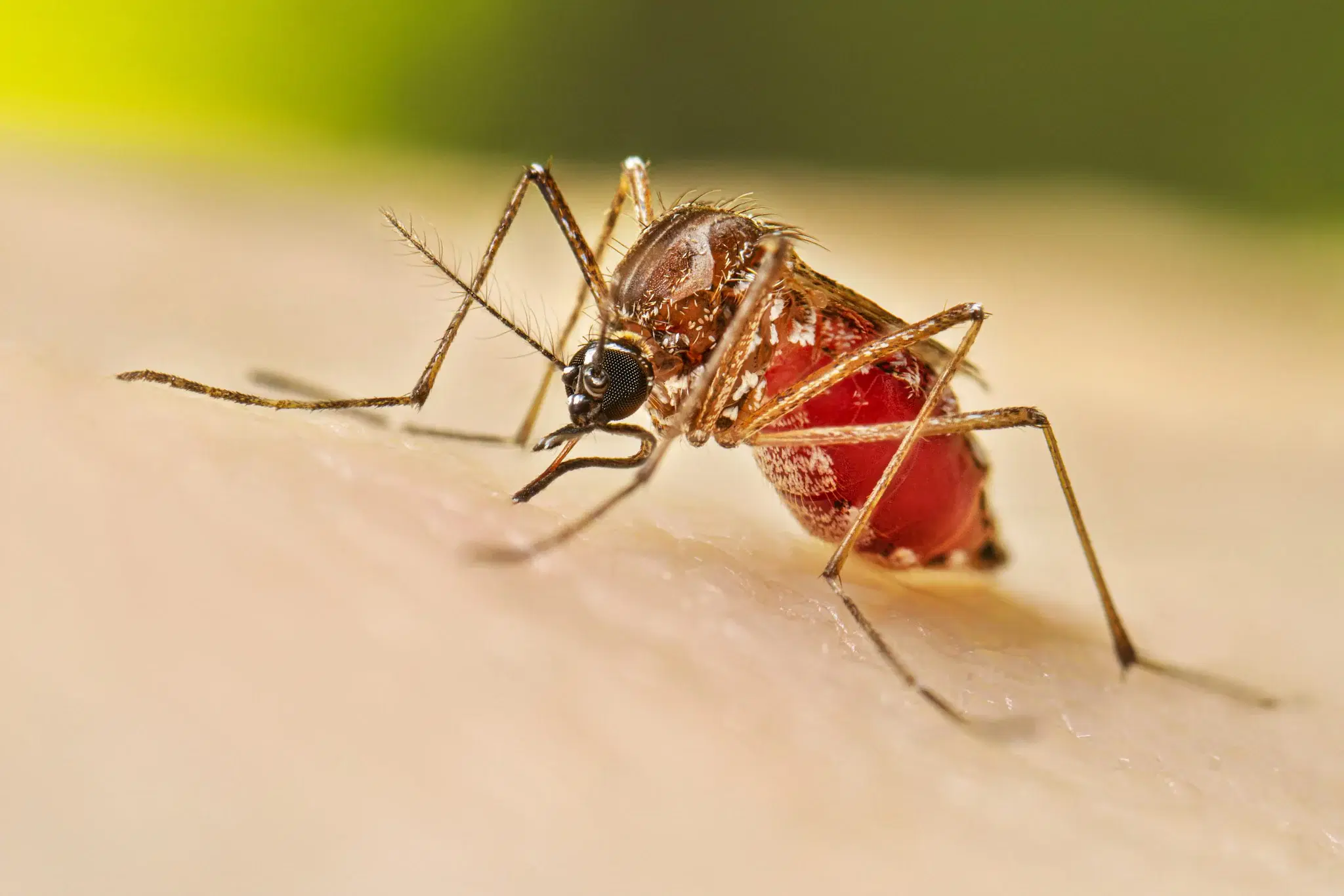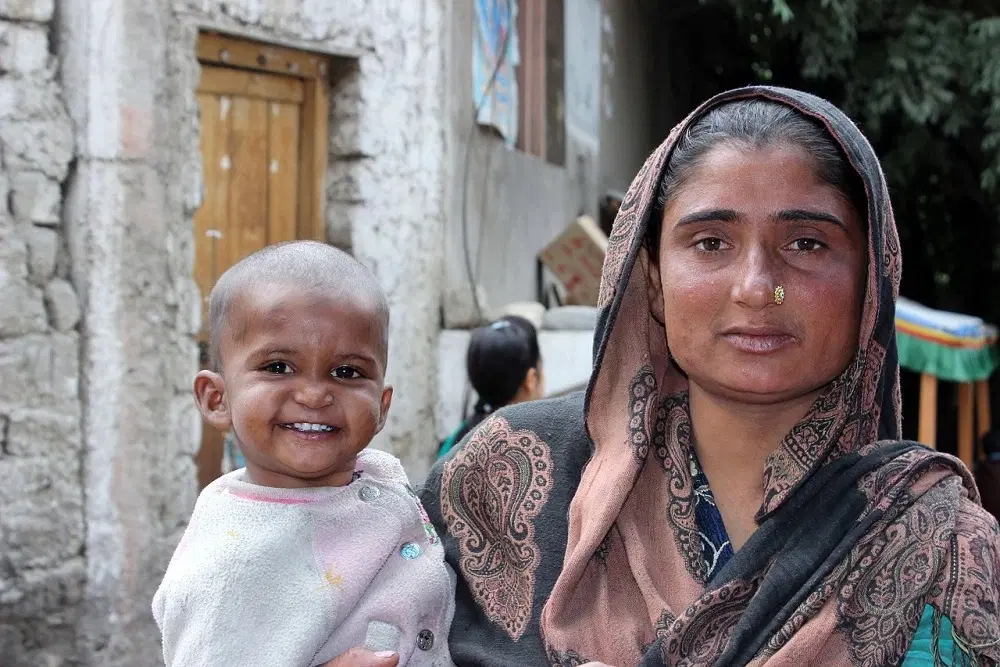
Dengue fever has developed into one of the leading global health concerns, specifically for the areas of the world that are identified as tropical and subtropical. With the increase in urbanization that is occurring in those areas of the world, the perfect breeding conditions are established for the propulsion of the Aedes aegypti mosquito. This mosquito is described as the main vector of dengue worldwide. Among the Aedes aegypti mosquitoes, some are proportionally highly adapted and widely distributed in both rural and urban areas. It breeds in man-made containers, whereas larvae prefer temporary standing water in a sunny location and can be found in anything that holds water.
The dengue virus comes in four different serotypes: DENV-1, DENV-2, DENV-3, and DENV-4. That literally means that a single person could actually experience up to four infections of dengue in their lifetime, with each one being from one of the different serotypes. The first infection is usually asymptomatic or only causes classic dengue fever, and this could easily be controlled with supportive care. But once a different serotype infects a person, the risk of experiencing some severe complications is actually high. It is through the help of a process called antibody-dependent enhancement (ADE) that the antibodies resulting from the previous infection actually allow the new serotype to enter the cells, thereby causing a heavier immune response.
Symptoms of dengue appear 4-10 days after the mosquito bite and can range from mild to severe. Initial signs of the disease manifest as the abrupt development of high fever, the presence of severe headaches, pain behind the eyes, and joint and muscle pain; thus, dengue earned its nickname, the "breakbone fever." A characteristic rash tends to appear. In mild cases, there may be slight bleeding from the nose or gums. Most patients recover within one week, but a few patients proceed to severe dengue: a potentially deadly evolution of the disease that involves plasma leakage, leading to fluid accumulation; severe bleeding; organ damage; and, if not treated correctly using modern Western medical methods, death in some cases.
The cases of dengue are increasing at an alarmingly high rate worldwide. Contributing factors for the increase in numbers are the associated climatic factors, which expand the geographical spread of Aedes mosquitoes; increased traveling and trade; and inadequate control measures applied against mosquitoes. Since no antiviral medication has been specifically developed for dengue, management aims at providing good supportive care by way of hydration, analgesia, and close monitoring for complications.
Since the disease is transmitted by mosquitoes, dengue control is highly dependent on the control of mosquitoes and avoiding their bites. This could be through various means, including the traditional methods of chemical and biological controls such as indoor and outdoor residual spraying and larviciding. Others include clearing bushes and drainages, use of repellent, protective clothing, and fixed window and door screens. A public health campaign should clearly take precedence in the dissemination of these preventative measures.
In short, dengue fever is a re-emerging threat with first priority on the global agenda. Knowledge of the causes and signs of this disease is the first step in the combat against dengue, but action to avoid and detect it early are needed to lessen its impacts.

Dengue fever has risen, like a viral illness, at rapid velocity and has come to threaten the Indian subcontinent. It turned into a cause of huge expenditure toward healthcare, reduced workforce, and social disturbances, more prevalent in the urban centres resulting from the consequent surge of dengue cases. This paper tries to explore how dengue fever is infecting the Indian economy and society at large, and the consequent remedial actions to counteract its impact.
The financial outlay associated with dengue in India is multi-dimensional. On the treatment front, direct costs associated with hospitalisation, medication, and laboratory tests are very strong. These can be crippling, more so for low-income groups or families in which one member has fallen victim to the infection. In the case of dengue, this hospitalisation can run into thousands of rupees, which many families could afford only through loans or by selling their assets. A study reported that, in India, the mean estimates for the treatment of a hospitalised patient for dengue are about ₹61,000, which is a high expenditure incurred in many households.
The indirect costs, the incremental effect of which adds more economic distress. Treatment usually requires patients to be bedridden for most of the weeks that the dengue illness persists, hence loss of working days directly results in a loss of income. Especially hard hit are people who depend on earning through daily wages to look after their families. The loss in productivity does not just affect the individual but rather generally affects the economy. Second, outbreaks can override the writ of whole communities with regard to business, schools, and other public services as the scope widens.
The social impact of dengue, too, is no less serious. Every outbreak of dengue continues to overstretch the health system of India. Of course, with an increased number of serious dengue cases during the peak season, it results in the overstretching of hospitals and clinics in most thickly populated towns and cities. Obviously, it leads to overcrowding, diverts resources away from other pressing healthcare needs, and further fuels the public health crisis.
Moreover, the dreaded fear and anxiety with dengue outbreaks at times even disrupts social–relationship causes. Thus, communities that are characterised by below-par public-health conditions and proper sanitation have a very high perception of risk. These conditions go on to further escalate panic due to a lack of awareness about the disease and some forms of misinformation.
Systemic investment in public health infrastructure, access to affordable quality health care services, and other intervention arrangements for appropriate vector control shall offset the otherwise possible economic and social impacts of the diseases. Public sensitization and education campaigns that target communities to sensitise them to take preventive measures to destroy mosquito breeding grounds are also to be carried out. The control of the long-term burden of disease through investments in research and development of vaccines and treatments for it will be an additional benefit.
Dengue is not a deadly disease in comparison to its other counterpart diseases. However, it has further embedded its impact on India's economy and its social life. Now, a strong and managed response from the health sector is a demand of society and policymakers.

The rapidly changing world of health and wellness is abuzz with supplements that are claimed to be magic bullets against all kinds of health woes. Energizers, pills to prevent chronic diseases—you name them, and there they are. But can supplements really replace a balanced diet?
There is a general notion that supplements are easier and more efficient ways to get all the necessary nutrients into the body. It literally means that if one takes some multivitamins or specific nutrient supplements every day, there is no need to worry about maintaining a balanced diet. The idea of "quick fixes" is tempting, especially when hectic routines make it difficult to focus on proper nutrition.
"Supplements should complement, not replace, a balanced diet," says Dr. Maria Lopez, a clinical nutritionist. Whole foods are packed with complex nutrition that no supplement on the market can fully replicate. While supplements can provide specific vitamins or minerals, they cannot offer the synergistic effects that whole foods deliver.
Fruits, vegetables, grains, and lean proteins are whole foods that provide an array of nutrients essential for health, such as fiber, antioxidants, and phytochemicals, all working together in the body. These compounds may have a synergistic effect that enhances the absorption and utilization of these nutrients by the body.
A study in The New England Journal of Medicine recently noted that some supplements—such as vitamin D or omega-3 fatty acids—have an overall positive effect in certain cases but do not replace the benefits of a varied and balanced diet. The authors emphasized that whole foods provide a complex mix of nutrients and compounds that supplements cannot replicate on their own.
The study also cautioned that over-reliance on supplements can lead to imbalances and even dangerous excesses of particular nutrients. For instance, fat-soluble vitamins A, D, E, and K, when taken excessively, can be stored in the body and become toxic.
Think of supplements more as an insurance policy to cover any nutritional inadequacies in your diet, rather than as a replacement for good nutrition. A balanced diet should form the foundation of any health regimen. Ensure you have a broad base of nutrient-dense foods in your diet by aiming to include these daily:
Always consult with a healthcare professional before starting any supplement regimen, as they can help determine your individual needs and check for potential interactions with medications or underlying health conditions.
While supplements have their value in supporting health, they should not replace a good diet. Whole foods offer comprehensive nutritional intake and other benefits that no dietary supplement can match. By keeping a diverse and whole food diet as the first line of defense and using supplements judiciously, you will be better equipped to support your health.

Atopic dermatitis, or eczema, is a chronic inflammatory skin condition characterized by redness, inflammation, and unbearable itching. While it cannot be completely cured, a variety of medical treatments and proper daily skincare can help alleviate symptoms and make managing daily activities easier.
Eczema affects both children and adults, with causes believed to be a mix of hereditary and environmental factors. It results in a weakened skin barrier, allowing irritants and allergens to penetrate more easily, leading to symptoms. Common triggers include:
According to Dr. Laura Thompson, a pediatric dermatologist, eczema management needs to be highly individualized. "Eczema management is highly personalized. What works for one person may not work for another," she says. Key treatment options include:
Effective long-term management of eczema involves more than just medications. Daily care and lifestyle adjustments can help reduce flare-ups and maintain healthy skin. Dr. Thompson shares some practical tips:
A study reported in The Lancet found that emollients play a significant role in managing eczema. The study observed that proactive emollient application may reduce flare-ups by up to 50%, keeping the skin barrier healthy and hydrated, and protecting against potential irritants.
Effective management of eczema requires a multi-pronged approach that combines the best of medical treatments with dedicated home care. By tracking what triggers flare-ups and maintaining proper skincare, individuals with eczema can better manage their symptoms and improve their skin health.

Acne is one of the most common skin disorders worldwide, causing immense physical discomfort and emotional distress. Understanding its underlying causes and exploring effective treatments can help manage and minimize breakouts, leading to clearer, healthier skin.
Acne occurs when hair follicles become clogged with sebum and dead skin cells. This blockage creates an environment where bacteria thrive, leading to inflammation and the formation of blackheads, whiteheads, and pimples. Several factors contribute to acne development, including hormonal changes, diet, stress, and genetics. According to the American Academy of Dermatology (AAD), up to 50 million Americans experience some degree of acne each year, making it one of the most prevalent skin conditions.
Dr. Sarah Johnson, a dermatologist, advocates for a multi-directional approach to acne treatment. "Topical treatments like retinoids, benzoyl peroxide, and salicylic acid are very effective for mild to moderate acne," she says. Retinoids increase cell turnover and prevent clogged pores, while benzoyl peroxide kills acne-causing bacteria, and salicylic acid helps exfoliate the skin and unclog pores.
For more severe acne, oral medications may be necessary. "Oral antibiotics can reduce bacteria and inflammation, while in more stubborn cases, isotretinoin—commonly known as Accutane—can be the silver bullet," Dr. Johnson explains. Isotretinoin is a powerful drug that significantly reduces oil production, potentially leading to long-term remission of severe acne.
Achieving clear skin requires more than just temporary measures; it demands a consistent skincare routine. Dr. Johnson recommends incorporating products with proven active ingredients, like retinoids and benzoyl peroxide, into your daily regimen. "Avoid pore-clogging cosmetics and maintain good hygiene," she advises. Washing your face with a gentle cleanser daily and using non-comedogenic products can help prevent future breakouts.
Diet and lifestyle also play a significant role in managing acne. Foods with a high glycemic index, such as sugary snacks and refined carbohydrates, can exacerbate acne. A study published in the Journal of the American Academy of Dermatology found that reducing the intake of high-glycemic index foods led to a noticeable improvement in acne symptoms. Additionally, managing stress through practices like yoga, meditation, or exercise can help control breakouts by regulating hormone levels.
Research underscores the importance of an integrated approach to acne management. The study in the Journal of the American Academy of Dermatology highlighted that subjects who reduced their intake of high glycemic index foods experienced significant improvement in their acne. This finding emphasizes the role of diet in skin health and the need for a balanced, nutrient-rich diet.
Although acne is a persistent and frustrating skin condition, understanding its causes and utilizing effective treatments can make a significant difference. By combining over-the-counter treatments, prescription medications, and lifestyle changes, individuals can better control their acne and achieve clearer, healthier skin. Long-term management requires a consistent skincare routine, dietary adjustments, and effective stress management.

The postpartum period, often referred to as the "fourth trimester," extends beyond birth to encompass the first 12 weeks following delivery. While the focus frequently shifts to the newborn, the health and well-being of the mother are equally important during this time. This period is marked by significant physical and psychological changes, making comprehensive care essential for a healthy transition into motherhood.
During the fourth trimester, a mother's body undergoes significant recovery processes, including the healing of the uterus, which typically returns to its pre-pregnant size within six weeks. However, nearly 40% of women experience complications related to childbirth, such as postpartum hemorrhage, infections, or severe pain. Regular medical checkups are crucial for addressing these issues. Unfortunately, according to the American College of Obstetricians and Gynecologists, nearly 70 percent of new mothers do not attend a postpartum visit within the recommended timeframe, highlighting a significant gap in care that requires urgent attention.
Postpartum depression affects about 10-15 percent of new mothers, while anxiety, mood swings, and feelings of being overwhelmed can affect up to 80 percent of women in the first few weeks after childbirth. The lack of adequate mental health support during this period can have dangerous long-term effects on both the mother and the baby. Healthcare providers should screen for postpartum depression and anxiety, ensuring that mothers receive necessary support through counseling, support groups, and, when needed, medication.
The first three months following childbirth are critical for mother-infant bonding. This bonding is fostered through skin-to-skin contact, breastfeeding, and responsive caregiving. However, research shows that approximately 60% of new mothers experience stress during breastfeeding, leading to feelings of inadequacy and dissatisfaction. Access to lactation consultants and support groups can make a significant difference in promoting successful breastfeeding and strengthening the mother-child bond.
The importance of maternal care during the fourth trimester cannot be overstated. Physical recovery, mental health support, and comprehensive care for newborns are all crucial for positive outcomes for both mother and child. Postnatal care must be integrated into health systems to ensure that all new mothers have access to the resources and support they need during this transformational period of their lives.

Pregnancy is a period of significant change for a woman's body, and nutrition is intricately linked to the development of both the mother and her baby. A diet rich in vital nutrients is not just helpful but essential for preventing complications such as gestational diabetes and preeclampsia, which can have long-term effects on both mother and child.
A woman's need for certain nutrients increases the moment she conceives. For example, her recommended daily intake of folic acid rises from 400 micrograms to 800 micrograms. Folic acid is crucial in preventing neural tube defects, which affect the baby's brain and spine. Pregnant women should ensure they get enough folic acid from fortified foods like cereals, leafy green vegetables, and supplements.
Iron is another essential nutrient. During pregnancy, daily iron needs rise to approximately 27 milligrams, compared to 18 milligrams for non-pregnant women. Iron is vital for the increased blood volume in pregnant women and supports the growth of red blood cells. It also helps prevent anemia, a condition that causes weakness or fatigue and significantly raises the risk of preterm delivery. Good sources of iron include lean meats, beans, and fortified cereals.
Calcium needs also increase during pregnancy, with a recommended intake of 1,000 milligrams per day. Calcium is crucial for the development of the baby's bones and teeth. Dairy products, fortified plant-based milk, and leafy green vegetables like kale are excellent sources of calcium.
Proper nutrition can prevent or minimize common pregnancy complications. Gestational diabetes, which affects 6-9% of pregnancies in the United States, can often be managed or even prevented with a diet low in refined sugars and high in fiber-rich foods like whole grains, fruits, and vegetables.
Preeclampsia, a complication that occurs in approximately 5-8% of pregnancies, is characterized by high blood pressure. Research suggests that a diet low in processed foods and high in fruits and vegetables may help lower the risk of developing preeclampsia. Additionally, an adequate protein intake of about 75-100 grams per day is recommended for general health during pregnancy.
A balanced diet that includes a wide variety of food groups is essential to meet the increased nutritional needs during pregnancy. Expecting mothers should focus on whole foods such as lean proteins, whole grains, a variety of fruits and vegetables, and healthy fats like avocados and nuts. Adequate fluid intake is also important, with a recommendation of 8-10 cups of water daily.
In summary, a healthy diet during pregnancy not only sustains the mother's health but also lays the foundation for the baby's growth and development. By consuming key nutrients through a balanced diet, mothers can significantly reduce the risks of pregnancy complications and ensure a healthy future for their children.

Vaccination during pregnancy is a critical step toward protection from maternal and fetal hazards. Contrary to some myths, vaccines like the seasonal flu vaccine and Tdap have been studied for safety and efficacy in preventing serious diseases in pregnant women and their babies.
Influenza, commonly referred to as the flu, poses a severe risk to pregnant women due to changes in the immune system, heart, and lungs during pregnancy. The flu can cause serious complications in pregnant women, potentially leading to hospitalization. According to the Centers for Disease Control and Prevention, getting flu shots during pregnancy reduces the risk of acute respiratory infection caused by flu by about 50%. Additionally, a study discovered that vaccination during pregnancy reduces the baby's risk of being hospitalized with flu in their first six months of life by around 72%.
Pertussis, commonly known as whooping cough, is another serious concern during pregnancy. Pertussis is an extremely contagious disease to which babies are most susceptible, leading to complications such as pneumonia, seizures, and even death. The Tdap vaccine, given in the third trimester, provides the newborn with passive immunity, protecting them until they are old enough to receive their own shots. A study in Pediatrics concluded that the Tdap vaccination in mothers is 91% effective at preventing pertussis in infants under two months of age.
Some expecting mothers are concerned that vaccines might be unsafe during pregnancy. However, in-depth research shows that flu and Tdap vaccines do not increase the risk of most adverse outcomes in mothers and babies. The American College of Obstetricians and Gynecologists strongly recommends these vaccinations as part of routine antenatal care. Importantly, these vaccines do not contain live viruses and are safe for both mother and child.
Vaccination during pregnancy is not only a matter of personal protection but also of community health. By getting vaccinated, pregnant women contribute to herd immunity, reducing the spread of these diseases among the wider population.
In the final analysis, maternal vaccinations, such as the flu shot and Tdap, are essential in protecting the health and safety of both the mother and the baby. They are supported by credible scientific evidence, endorsed by health professionals, and remain vital in preventing life-threatening diseases.

Maternal mental health is therefore part of care during pregnancy and postpartum, yet eludes observation. It is imperative that emotional and psychological well-being in a mother be considered just as vital to the mother's physical health for long-term outcomes of both mother and child. This is even more so when one considers that studies have estimated 10-20% of women suffering from incapacitating mental health issues during pregnancy and post-childbirth.
The most common mental health conditions for expectant and new mothers include prenatal depression, postpartum depression, and anxiety disorders. As much as 7-20 percent of pregnant women are affected by prenatal depression. The symptoms for this condition include being overtly sad, feeling excessively worn out, and having negligible interest in activities that one could have found fun before getting pregnant. More serious than the "baby blues," postpartum depression affects up to 15% of new mothers and can pose a serious complication in a mother's care for her newborn. Only the most prevalent symptoms are mostly reported: extreme mood swings, feelings of worthlessness, and not being able to bond with the baby.
Anxiety disorders are common in both generalized anxiety disorder (GAD) and postpartum anxiety. An estimated 6% of pregnant and 10% of postpartum women suffer from anxiety disorders, which manifest as constant worrying, mood irritability, and panic attacks. This not only affects the mother but also entails complications, including preterm birth, low birth weight, and even developmental problems in the child.
Early diagnosis and intervention are crucial in the management of maternal mental health. Mental health screening should be an integral part of routine prenatal and postpartum care to enable early detection of symptoms. Women who score highly using these screening tools should be referred to mental health professionals for further assessment and intervention.
Psychotherapy, particularly cognitive-behavioral therapy (CBT), is highly effective in treating antenatal and postpartum depression and anxiety. CBT helps in reframing negative thoughts and developing strategies to cope with them. In severe cases, medication may be necessary. Selective serotonin reuptake inhibitors (SSRIs) are commonly recommended; they are generally safe during pregnancy and breastfeeding.
Maternal mental health is supported by a system of networks—professional support from physicians or healthcare providers, as well as support from other mothers who may have faced similar challenges. Engaging in a support group, either offline or online, helps create a sense of community and reduces feelings of isolation.
Maternal mental health care includes regular screening, therapy, and a strong support system. Prioritizing mental health helps mothers navigate the challenges of pregnancy and postpartum, ensuring a healthy future for both moms and babies.

Prenatal care is the foundation of the process of handling the health of the mother and the fetus. It establishes a sequential follow-up system in the progression of pregnancy and attends to any arising complications. Such comprehensive prenatal care will not only sustain the well-being of the mother and baby but also substantially diminish the risk of complications during pregnancy and childbirth. This, therefore, shows that regular and timely prenatal visits are important in identifying and solving problems affecting the mother and the child.
Women considered to have low-risk, uncomplicated pregnancies should have a minimum of 14 prenatal care visits according to the American College of Obstetricians and Gynecologists. In traditional settings, prenatal care visits occur at the following intervals:
Each prenatal care appointment provides an opportunity for the healthcare provider to check on the health of the woman and her developing infant, conduct any necessary tests, and provide information and counseling about how to have a healthy pregnancy.
The next step in prenatal care is screenings and tests. Blood tests to determine the mother's blood type and Rh factor and tests for infections, such as HIV, syphilis, and hepatitis B, are done early in pregnancy. A healthcare practitioner uses real-time ultrasound to screen for fetal development, potential birth defects, and the date the baby is due. Other tests include a glucose tolerance test that is performed at 24- to 28-week gestation; this will help catch up with the diagnosis of gestational diabetes, which occurs at about 6% to 9% in gestation.
Beyond such routine screening tests, prenatal care encompasses monitoring the mother's blood pressure, weight, and overall status. This is of particular importance for early detection of disorders like preeclampsia, one of the serious complications of pregnancy, representing pregnancy-induced hypertension complicating 5-8% of all pregnancies, often with devastating outcomes if not managed properly.
The single most convincing benefit of regular antenatal care will definitely be the identification and management of potential risks in time, which include a timely diagnosis of fetal growth restrictions that might consequently cause interventions for the improvement of perinatal outcomes. The care also makes it possible for the general management of some of the health problems faced by mothers, such as anemia or some thyroid problems, which may have an influence on pregnancy if not treated.
Prenatal care is important for both the health of a mother and that of the developing fetus. This means that prenatal care works through detecting any kind of emerging complication, with the provision of further treatment to reduce risks and promote a healthy pregnancy and delivery with the best possible outcome. Guys, stats are here: frequent prenatal visits are the key point of a safe and healthy pregnancy.

Skipping breakfast has long been one of the methods people turn to in an effort to help slash their daily calorie count and shed pounds. The supposition here is that if you miss your morning meal, you're going to save enough calories throughout your day to ensure weight loss. But does that really work?
The myth is that missing breakfast is good for weight loss because it reduces the net intake of total calories consumed during the day.
If you're skipping your breakfast to lose weight, then don't skip it, as that may not be the case, according to many recent studies. In fact, sometimes such an idea can have a reverse effect. As one of the leading nutrition experts, Dr. Emma Rogers says, "Missing breakfast can make you much hungrier later in the day, where you overeat or reach for less healthy food choices."
Several research studies looked into the influence of breakfast on weight management and health in general. In the Journal of Nutrition, such a large review has been produced, which has come to the conclusion that people who regularly have a balanced breakfast are known to maintain healthier body weights than those who do not eat this meal. This study indicates that breakfast consumption is associated with better overall nutrient intake, which is conducive to good health in the long run.
A study conducted by researchers at the University of Missouri showed that subjects who had eaten some breakfast indicated better control on appetites, which in most cases resulted in lesser tendencies to overeat later in the day. This study shows a healthy breakfast may help control appetites and ultimately prevent excess calorie intake later in the day. Another study in The American Journal of Clinical Nutrition confirmed these data, demonstrating that those who skip breakfast were shown to experience higher feelings of hunger and thus make less healthy food choices later in the day.
Breakfast jump-starts your metabolism and provides the energy to see you through a busy day. If you don't eat it, your metabolism will run more slowly, and you will have less energy. That makes it even harder to diet. On top of that, including protein, whole grains, and fruit in your morning meal helps blood sugar levels stay stable so you feel fuller for longer. This quashes the need to reach for high-calorie, low-nutrient snacks later in the day.
A healthy and nutritious breakfast is one of the most important meals during the day for maintaining weight and being healthy. It should be filled with a balance of protein, whole grains, and fruits. These can include Greek yoghurt topped with berries and a sprinkle of granola or oatmeal with nuts and sliced bananas to fuel the body with energy through to lunchtime by burning it slowly.
While the aim of this would be to miss breakfast, waking up to a well-balanced and nutrient-dense morning meal is way more beneficial for weight management and health. Having a healthy breakfast will help control appetite, provide fuel to your metabolism, and even set the path toward healthier eating during the day.

The nutrimony and convenience of food seem to fight each other when it comes to feeding our children. The increasing interest kids have in junk food makes it easy to let them engage themselves in having chips, sugar-added cereals, and fast food. However, these choices can have serious implications for health.
Junk food is especially seductive to kids, with high sugar, salt, and fat content. Since the sugar, salt, and fat start working on the brain's reward centers, these kinds of foods will be very pleasurable for a child, asking for more. These foods may taste too great, but they lack the needed nutrients in the growth and development of your child.
"The effects of junk food on health can be pretty bad," says Dr. Aarti Kapoor, a renowned pediatric nutritionist. "Junk food, when taken regularly, can cause nutritional deficiencies and lead to long-term health problems like obesity, diabetes, and heart disease."
These cereals may look like a quick fix for breakfast, but in reality, they are loaded with sugar and are quite low in nutrition. Watch out for cereals that have large amounts of sugar and go for those containing whole grains with less added sugar.
Convenient yet not so healthy, instant noodles are extremely high in sodium and really low in nutrients. They often come with unhealthy preservatives and lack the fiber needed in a balanced diet.
Chips are not just foods that have empty calories; they also have a chemical in them called acrylamide, which causes cancer. They can cause heart problems and blood pressure—therefore, not good choices for snacking.
Sodas and energy drinks are loaded with sugar; they are devoid of any nutritional value. It results in weight gain, which increases the chances of type 2 diabetes. Water, milk, or naturally flavored water are healthier options instead of soda.
Candies and chocolate have proven to be incomparable favorites among children. However, these foods have a high sugar and calorie content, which can readily lead to obesity and tooth decay. Fruits are a much better alternative to quench the sweet tooth.
Sausages and hot dogs contain a great amount of sodium and preservatives. Processed meat, as dangerously numbered, can cause cancer. Fresh, unprocessed meat or plant-based proteins are a healthier alternative.
Focus on getting more nutritious food into your child's diet, rather than on depriving them of junk food. Fresh fruits, vegetables, whole grains, and lean proteins have to form a part of their diet. Engage your kids in meal preparation.
"The key is to make healthy food fun and enjoyable," says Kapoor. "Getting children involved in the cooking process and providing a variety of colorful fruits and veggies are ways by which they can develop better eating habits."
Given today's busy lifestyle, it has become imperative that one must be conscious about what your child is eating. Limit the amount of junk food and expose your child to a balanced diet to ensure a healthy tomorrow.

The increasing use of vape pens, e-cigarettes, and other electronic nicotine delivery devices among adolescents in India is a serious health concern. The gadgets, hitherto believed to be safe substitutes for smoking conventional cigarettes, are associated with a myriad of risks—acute lung injuries to long-term impacts on brain development, addiction, and mental health.
Although most people believe that vaping is safer than smoking, researchers argue that e-cigarettes contain a lot of harmful chemicals. For example, acetaldehyde is responsible for changing the way the liver works. Other chemicals cause lung diseases and disorders in cardiovascular activity. The most alarming thing is the content of acrolein, which is mainly applied as herbicide for killing the weeds.
Even when there is a blanket ban on e-cigarettes in the country, these devices are still available for use by the youth. According to Dr. Vishal Rao, Group Director, Head and Neck Surgical Oncology and Robotic Surgery, HCG Cancer Centre, many such products were acquired online by young people who circumvented age verification or through local retailers who may unknowingly sell to minors.
Among the most overwhelming factors, which contributed to increased e-cigarette use among adolescents, have been highly inducible flavored vaping products and aggressive, targeted advertisements on social media. "Flavors and devices that attract youth are heavily marketed on social media and websites leading to wide-scale addiction," says Dr. Rao.
In the short term, vaping can lead to lots of health issues during adolescent years. Some of these are respiratory problems like coughing, wheezing, shortness of breath, and aggravation of the symptoms of asthma. Vaping is also associated with the potential for nicotine poisoning, which influences rises in heartbeats and causes irritation in the mouth and throat.
There are reports of chronic respiratory illnesses like bronchitis, increased risks for major lung diseases, and cardiovascular issues—high heart rate, blood pressure, blood clotting—thereby increasing the chance for heart diseases. "Nicotine addiction can lead to lifelong dependency and impair brain development related to attention, memory, and impulse control," says Dr. Rao.
Dr. Sachin D, Consultant Interventional Pulmonology, Critical Care and Sleep Medicine, Fortis Hospital, has warned that effects of vaping on heart and brain could be extremely harmful in teens. Vaping is likely to cause side effects like acute respiratory distress syndrome, which is life threatening due to additives of vaping liquids like glycol. It also contains, in some vaping liquids, cannabinoids which induce high leading to dependence and withdrawal symptoms causing psychological disorders.
Parents, teachers, and guardians should therefore be equally aware of these risks and sensitize the youth on the potential dangers of vaping. In order to save the young generation from these bad habits, the glamour associated with e-cigarettes needs to be countered with factual information about their health impacts.
The dangers from vaping should thus be raised, and rules set in place to the easy access of these products by minors. Only through mutual help in collaborative efforts can we help deter this rising trend and save young lives.

Tobacco use is one of the 21st-century challenges whose trend can cause a death toll of 1 billion people if it is not checked. This is despite having bans on selling to minors, wherein approximately 25% of youth under 18 use tobacco, and 12.6% of those smoke multiple tobacco products. The effects are far-reaching in terms of economic costs, health risks, and social influences.
Most of the programs and policies have nothing specific for any age. What is applicable to old may not work for young. A more holistic approach for youths can be more effective and efficient. More preventive measures translate to reducing the risk of serious addictions and health complications later on. Existing policies need to show a more explicit focus towards the young.
Tobacco use among youth is an international problem. Yet more than half of the 1.2 billion smokers worldwide are young. The prevalence varies according to region and tends to be higher among boys. Smokeless tobacco use is increasing. In India, 21% of adolescents use tobacco. While the prevalence of smoking has been reducing in some countries, total number of smokers increased due to increased population.
Youth is the critical period of life, which is variously defined. For instance, the United Nations' system defines youth as the period between 15-24 years of age; however, other organisations have their own parameters regarding age. Therefore, for this study, the definition of youth shall be used indiscriminately to include all contexts and definitions of the term.
Some of the theories that explain why youth start smoking include social learning, psychological development, and behaviour theories. Family, social environments, and media influence are major influencing factors. Students in high school whose family members or social friends are smokers, or who are influenced by advertisements, are likely to be smokers. Smoking at a young age mostly leads to addiction and other problems related to substance use.
Tobacco use in youth is an international health crisis that warrants age-specific policies. Understanding the best drivers among youth smokers and developing effective prevention programs can help reduce the burden of tobacco use on public health.

Sitting on the throne longer than you would have liked? Well, if you have scrolled through TikTok, you are far from alone. So many young people, particularly women, are now sharing their experiences with gastrointestinal distress like irritable bowel syndrome and chronic bloating. Experts say it's largely a good thing—helping to break the taboo around gut issues, encouraging others to get help. However, there's a lot of misinformation floating around, oftentimes from influencers touting unproven products. So let's dive into what the pros suggest if you're dealing with digestive discomfort.
Murky is whether more people are actually suffering from digestive issues, period—but far more are discussing them. Some believe this surge may be indicative of surging anxiety, which spiked during the pandemic. After all, research shows the brain and gut are inextricably connected via nervous systems. When your brain is going a mile a minute anxious, or you're just feeling crummy, it can really throw your gut off—making it harder for your digestive system to do its thing.
The causes of irritable bowel syndrome are not yet known, but the process no doubt involves the nervous system, and we do know that stress can make things worse. According to Dr. Nina Gupta, a gastroenterologist in Chicago, when she tries to change anything in a patient's gut health, she often has to take on their mental health too.
The answer depends on your discomfort level, according to Dr. Uma Naidoo, director of nutritional and lifestyle psychiatry at Massachusetts General Hospital. She studies how food and the brain are connected. If you notice abrupt changes in your bowel habits, it may be time to get checked out.
"For instance, if someone who's otherwise never had any issues with digestion suddenly develops severe changes in their bowel habits, that's a red flag," says Dr. Naidoo. Also, if you have blood in your stool or if diarrhoea persists for more than a few weeks, seek medical attention immediately.
According to Dr. Naidoo, these would include stress management practices like meditation, breathwork, and living mindfully. Food sensitivities can bring about IBS symptoms, so tweaking your diet and doing a bit more regular exercise may make a difference.
"Adding a good probiotic to your diet or increasing probiotics and fermented foods gradually can be very helpful," she says. "Stress management combined with dietary changes can be very potent." But if your symptoms get worse, or you are unable to control them on your own at home, that's a sign that it is time to see someone.
While it's fabulous that digestive health is becoming a more open topic, one should deal with it very carefully with accurate information and professional advice. Therefore, the next time you see TikTok about the latest gut health trend, take it with a pinch of salt and consult with a healthcare provider on serious concerns.

India is so vastly diversified that equally colourful is the array of cosmetic problems that, climatically, diet-wise, and genetically, crop up in this land. From various parts of the country, people are hit with unique beauty challenges, but many common problems sweep a large part of the population. So let's discuss some common cosmetic issues and how to fight them.
Probably the most common skin condition in Indians is hyperpigmentation, which can manifest as spots or patches on the skin. This usually results from an overproduction of melanin that might get triggered by too much sun exposure, hormonal changes, or skin trauma. The sun is particularly a big problem in India due to abundant sunlight and the amount of time spent outdoors.
Broad-spectrum sunscreens of high SPF should be used regularly to help in this regard. Protective clothes and shade should be pursued during peak sun hours. Topical treatments containing vitamin C, kojic acid, and niacinamide help lighten dark spots. Dermatological treatment in the form of chemical peeling or laser therapy may be required in resistant cases.
Acne is not just a teenager's problem; it represents an issue many adults face across the country. The hot and humid climate raises, even more, the rate of production of oils in the skin, hence making breakouts very easy. Other factors are diet, stress, and hormonal changes. Many of the concerns result from post-acne scars and dark spots, leading to uneven skin texture and skin tone.
Needless to mention, this would form part of a regular oily or acne-prone skin skincare routine, which includes gentle cleansers, exfoliants, and non-comedogenic moisturisers. Over-the-counter benzoyl peroxide or salicylic acid will work on mild acne; however, serious ones may need prescription medicines combined with professional treatments such as chemical peels and microneedling.
A lot of hair fall problems have their roots in genetics, diet, environment, and even stress. While the traditional Indian diet is broadly nutritious, it may be deficient to provide adequate nourishment for healthy hair growth. This is further aggravated by pollution and hard water.
A good wholesome diet rich in vitamins and minerals, with emphasis on iron, zinc, and biotin. Massaging with some warm oil—coconut or almond, or at the worst, castor oil—using long strokes will improve scalp circulation. Avoidance of excessive heat styling and harsh chemical treatments. If there is extensive falling, minoxidil or even PRP therapy may be helpful.
The most common cosmetic complaint is dark circles under the eyes. The root causes for its occurrence can be traced back to genetics, lack of sleep, dehydration, and some individual lifestyle habits like spending too much time on computers or other screens. Work hours are long and demanding in India; hence, it is an extremely common cosmetic complaint.
Rest, water, and a good diet reduce dark circles. Retinol and vitamin K and C topical applications will make for better skin tone and texture. It will include cold compresses and sunblock application around the eyes. Dark circles that show up relentlessly and will hence require dermatological treatments such as lasers or fillers.
This is an uneven skin tone, majorly caused by ultraviolet radiation, pollution, and hormonal changes, which causes the skin to turn dull and tired.
Exfoliate regularly with gentle scrubs or chemical exfoliants like alpha-hydroxy acids for even out skin tone. Use antioxidants—Vitamin C in skincare helps enlighten skin tone. Slather on sunscreen repeatedly to prevent further unevenness.
Cosmetic problems form part of the lives of many Indians and are the result of interactions between genes, environment, and lifestyle. Deficiencies like these can be exasperating, but healthy habits and professional treatments, when combined with proper skincare, may easily give a new look and health to one's skin and hair. After all, consulting a dermatologist always helps in getting personalised advice and treatment for seeking the right cosmetic outcome.
It means that when people address these very issues, they can feel more confident in their skin by finding more natural beauty in themselves.

Diabetes is a chronic condition that affects millions of people worldwide. It occurs when the body is unable to properly process glucose, leading to elevated blood sugar levels. Understanding the causes, symptoms, and management strategies for diabetes is crucial for those affected by the condition and for those looking to prevent it.
Diabetes is a metabolic disorder characterized by high blood sugar levels over a prolonged period. It is mainly classified into three types:
The causes of diabetes vary depending on the type:
Common symptoms of diabetes include:
Effective management of diabetes involves a combination of lifestyle changes and medical treatments:
Diabetes is a serious condition that requires careful management and lifestyle adjustments. By understanding the causes, recognizing the symptoms, and adopting effective management strategies, individuals with diabetes can lead healthy and fulfilling lives. If you suspect you may have diabetes or are at risk, consult with a healthcare professional for proper diagnosis and guidance.